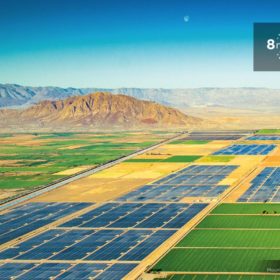
The California Independent System Operator has warned state regulators that there could be a 4.7 GW capacity shortfall in 2022, in the early evening hours of the annual peak demand events of September. The grid operator has suggested the alteration of water cooling laws, as well as increased procurement of resources.
The California Independent System Operator (CAISO) has suggested, in a response filed with the California Public Utilities Commission (CPUC), that “refinements (to an earlier analysis) indicate a greater operational deficiency reaching maximums of 2,300 MW, 4,400 MW, and 4,700 MW in 2020, 2021, and 2022, respectively.”
The grid manager of 90% of California’s electricity demand made two broad recommendations:
- Move forward with efforts to extend the once-through-cooling regulation compliance dates for existing generation resources.
- Develop a procurement plan for 2020-2022 to meet reliability needs and facilitate the retirement of any generating unit that receives an OTC compliance date extension.
The report noted a prior analysis done by utility Southern California Edison (SCE), which found that “the peak hour of the year occurs consistently in September. In 2020 and 2021, the projected peak falls within hour ending 17 (based on P.S.T. or 6:00 p.m. P.D.T.). By 2022, the peak shifts to hour ending 18 (based on P.S.T. or 7:00 p.m. P.D.T.).”
As such, the analysis looks at various hours within that period when determining what the shortfall could be. From the report, various electricity sources are shown, with solar power dropping as the evening progresses leading to the shortfall. Page 20 of the documents breaks out the capacity by source with number values, while pages 26-28 break the same hourly data below into numbers as well.
In 2020, for the hours ending 17 through 19, the resource adequacy-backed energy is 2,200 MW, 2,300 MW, and 1,500 MW less than the hourly capacity need. In 2021, for the hours ending 17 through 20, the reliability gaps increase to 4,000 MW, 4,400 MW, 3,800 MW, and 2,200 MW. Then in 2022, for the same hours as 2021, the gap is 3,900 MW, 4,700 MW (peak value), 4,200 MW, and 2,600 MW.
And all of this led to a most astute observation by “Energy Futurist/Analyst/Writer/Speaker” and EV-Grid Manager at @RockyMtnInst, Chris Nelder:
Put another way… Cali just issued a shadow RFP for 4.7 GW of RE/EE/storage. Great opportunity for developers. https://t.co/13beHBgvGt
— Chris Nelder (@chrisnelder) August 14, 2019
And in a state like California, which has aggressive goals of reaching 50% renewables and 100% clean energy by 2045, you’ve got to wonder if Nelder is right, and how this is going to work. As CAISO said in its report, the sun goes down and the peak is too late for even west-facing solar panels.
Another consideration, not referenced directly in the document, is that Pacific Gas and Electric Company has requested that its bankruptcy court judge approve an 11% discount for the mNOC AERS energy storage project and an additional 15 months to deploy, while for the Hummingbird battery a 10% discount and 12 extra months to deploy have been requested. These projects were scheduled to be online in 2019 and 2020.
The document notes that within the state, 1,047 MW of the 1,597 MW in nameplate capacity contracted to come online before August 2021 is solar, but “by the later peak hour in 2022 (hour ending 18 or 7 p.m.) average solar generation [is reduced] to only 0.04 percent of maximum generation.”
CAISO’s future capacity queue includes 43 GWac of solar power and 36 GW of energy storage. However, most of it is back loaded. In addition, most of the projects don’t have all documents in place.
Lắp đặt điện mặt trời Khải Minh Tech
https://ift.tt/2X7bF6x
0906633505
info.khaiminhtech@gmail.com
80/39 Trần Quang Diệu, Phường 14, Quận 3
Lắp đặt điện mặt trời Khải Minh Tech
https://ift.tt/2ZH4TRU
Không có nhận xét nào:
Đăng nhận xét